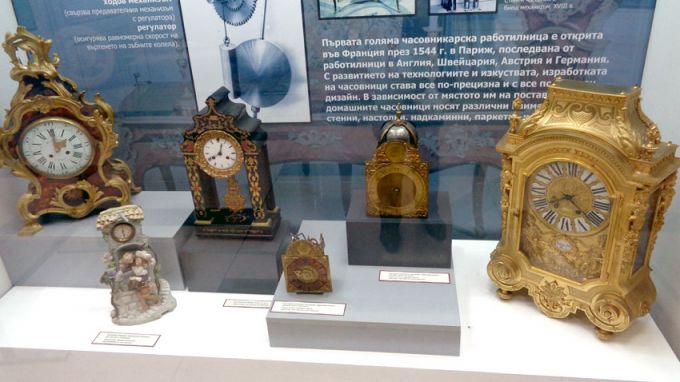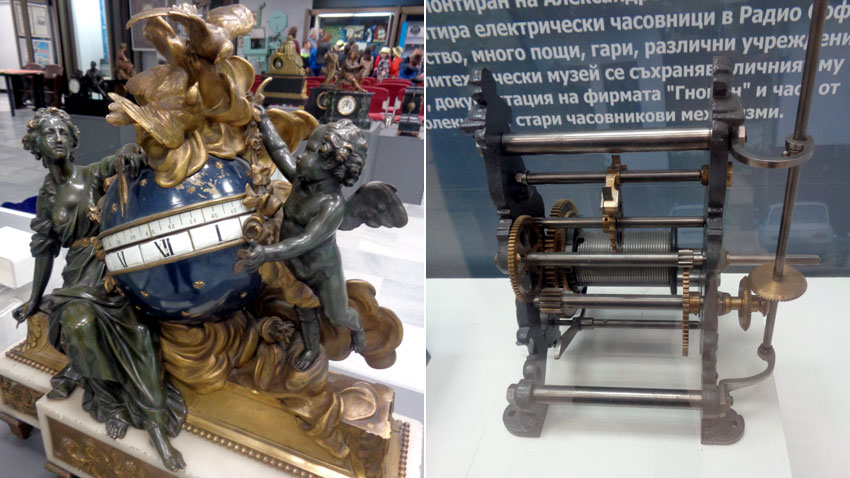 6
6
This year the National Polytechnic Museum turns 60. The idea to have a technological collection was a dream many Bulgarian engineers cherished. Yet it came to fruition rather late. One of the reasons is that the responsibility for the collection was spread across different institutions – The Committee for Culture, the Bulgarian Academy of Sciences, the Committee for Higher Education and Technological Advancement. In 1968, the first curator was appointed at the museum, and its first director – the following year. The start was given to collecting the exhibits and popularizing the idea. In that period the Polytechnic Museum worked very well with research and technological unions. Here is more from Lyubov Filipova, chief curator of the museum:

“One of the people who made the museum possible was engineer Stefan Rabov, later associate professor of communications at what was then the Higher Institute of Mechanical and Electrical Engineering. He reached out to people from different institutions which were in possession of objects connected with the history of technology. That was how the museum collections came into being. The first major collection is from the Vocational School of Precision Engineering and Optics which donated old film projectors and other equipment, movie and photographic cameras and two clocks. They were not all that valuable, but for a museum such as this it was a start. The biggest and most prestigious collection was put together at the beginning of the 1970s, the so-called royal collection. It included items from the palace property in Sofia, most probably from Vrana palace, which are used as props by the national film centre to this very day with all terrible consequences this entails – substitution of the exhibits, repainting, reshaping, irreparable damage and destruction.”
And then, after the publication of an article by Anteni newspaper, the Committee for Culture launched a large-scale campaign, in which the leading role was assigned to the Polytechnic Museum - at the time still a young institution with a staff of enthusiasts – all the more so that many of the items were connected with technology. The collection used as props by the national film centre was divided up among several museums in Sofia. That was how the polytechnic museum got the splendid collection of 17 clocks, most of which had adorned the palatial mantelpieces. Now, three of the most beautiful clocks are on display as part of the “Beauty of Time” exhibition.

The personal collection of pocket watches and wall clocks belonging to GeorgiHadjinikolov, as well as his toolkit, were also donated to the museum.
“He is one of few Bulgarians with a specialized education – he graduated in 1914 in Switzerland,” Lyubov Filipova goes on to say. “Upon his return he took it upon himself to pass his trade onto young Bulgarians. And around the year 1930 he set up an enterprise he called Gnomon clock centre. The gnomon was an element of the sun dial – the oldest timekeeping device known to man. It is the element casting the shadow that shows what time it is. His enterprise put up around 60 tower and railway station clocks in many towns across the country. Towns like Gabrovo, Stara Zagora, Sevlievo now had clocks on the buildings of their popular banks or post offices. By the 1940s they were powered by electricity. The clock at the central railway station in Sofia also had an electric system installed. In our day you can still see one of his clocks on the building of the church Sveti Sedmochislenitsi (Sts. Cyril and Methodius and their five disciples).”
Through the years the number of museum staff has increased; the curators were in charge of one or two departments and traveled around the country. They recorded the stories they heard from old technicians, engineers and looked for items of interest and archives. That was how the museum obtained its collection of typewriters, some of which are rare specimens dating back to the turn of the 20th century. The collection of radio receivers is huge. The exposition also features the first Bulgarian-made experimental TV camera, constructed by Prof. Sazdo Ivanov, which was used in the first TV broadcast in 1952. Through the years the curators at the museum have maintained rewarding contacts with the Sofia University Physics Faculty and with what is today the Technical University – from them, the old equipment found its way to the museum after decommissioning. As a matter of fact, the Physical Devices section displays, for example, the telescope used by the scientist-encyclopaedist Dr. PetarBeron (1799-1871), who has gone down in history as the author of the first Bulgarian primer, but also for his insights into problems connected with astrophysics. The latest major donation to the museum is the diploma of Teodor Dimitrov, who was deputy librarian at the UN library for many years and who left Bulgaria many collections. The Polytechnic Museum got the collection of clocks – beautifully crafted by renowned Swiss and French masters in the latter half of the 19th century.
English version: Milena Daynova
Photos: Veneta PavlovaHoly Saturday services begin on Friday evening with Vespers. The Church commemorates the burial of Christ the Saviour and His descent into hell to save the righteous who had died before His work of redemption. Joseph of Arimathea and Nicodemus, with..
On Good Friday, the saddest day for Christians, the liturgy commemorates the suffering, crucifixion and death of Jesus Christ, who sacrificed himself for the guilt and sins of humanity. The service at the Metropolitan Cathedral "St. Nedelya" in..
In 2025, the Catholic and Orthodox churches celebrate Easter on April 20. It is more joyful when we celebrate the Resurrection of Christ together. This is what Father Stefan from the Orthodox Church "St. Nicholas" and parish priest Father Walter..
On 20 April, all Christians will celebrate the Resurrection of Christ. Against the backdrop of our divided and troubled world, Catholics, together with..
Holy Saturday services begin on Friday evening with Vespers. The Church commemorates the burial of Christ the Saviour and His descent into hell to save the..
Patriarch Danil of Bulgaria, Metropolitan of Sofia, greeted the faithful with the joyful words "Christ is risen!" In his Easter message, he called on..

+359 2 9336 661
